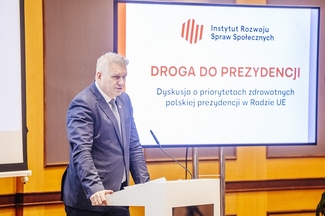Pobierz materiał i Publikuj za darmo
Berlin, September 8, 2015 – Most industrialized countries in the OECD are not yet ready for the international community’s new sustainability pledge. Many are nowhere near achieving the global policy objectives that are to be adopted by the heads of state or government at the United Nations Sustainable Development Summit this month. Indeed, there is the danger that the targets for many indicators will be missed entirely. The greatest deficits of the industrialized nations lie in their less-than-sustainable production and consumption behavior. In addition, in many cases their economic systems also exacerbate the trend toward social inequality.
This is the result of a comparative study of all 34 OECD states conducted by Germany’s Bertelsmann Foundation on the basis of 34 indicators for the 17 future Sustainable Development Goals (SDGs) for 2030. The study is the first one in the world to systematically investigate the present status of each of these countries, both individually and in comparison with one another. This snapshot additionally identifies countries that can serve as role models with regard to particular Sustainable Development Goals, while also pointing out where substantial deficits still exist. Thus the study provides a blueprint for the attainment of the SDGs in the next 15 years.
According to the study, the countries best positioned to achieve the new UN goals are the four Scandinavian nations Sweden, Norway, Denmark, and Finland, with Switzerland following in fifth place. The nations with the lowest ranking are the USA, Greece, Chile, Hungary, Turkey, and Mexico.
Aart De Geus, Chairman of the Bertelsmann Foundation, puts it in clear terms: “Our investigation is the first stress test for the industrialized countries. The analysis shows us where we, too, have to do our homework. And it shows us where the industrialized states are already at risk of missing the new Sustainable Development Goals”.
The investigation further reveals major differences between the individual countries with respect to various goals. Social inequality, especially, has now reached record levels in industrialized nations and continues to rise. In 23 OECD states, the wealthiest 10 percent of the population now earns at least as much as the poorest 40 percent. The earnings of the richest 10 percent in the USA are even 1.7 times as great as those of the poorest 40 percent and in Chile they are 3.3 times as great. In countries such as Slovakia, Slovenia, Norway, the Czech Republic, and Denmark, income is considerably less concentrated, proving that inequality is not an inevitable development.
Great differences are also apparent in, for example, environmental pollution. Countries like Australia, Canada, Poland, and Mexico discharge over six times as much carbon dioxide per unit of economic output as does Sweden or Norway. The share of renewable energy also varies considerably between countries. South Korea, the United Kingdom, and the Netherlands use less than 4 percent of renewable energies. By contrast, Iceland, Norway, and Sweden have already achieved a share of over 47 percent, which they are steadily expanding without hindering economic growth.
In his foreword to the study, Kofi Annan, the spiritual father of the Millennium Development Goals, calls for greater efforts on the part of the world’s wealthy countries: “I am thankful to the Bertelsmann Foundation for highlighting this issue in such elaborate detail. This study will hopefully spark reform debates on sustainability and social justice in many high-income countries. We owe it to our planet and its people”.
For more information: www.bertelsmann-stiftung/org
Our expert:
Dr. Christian Kroll
phone: +49/5241-81-81471
mobile: +49/173-6601646
e-mail: christian.kroll@bertelsmann-stiftung.de
Pobierz materiał i Publikuj za darmo
bezpośredni link do materiału
| Data publikacji | 08.09.2015, 11:13 |
| Źródło informacji | APA-OTS |
| Zastrzeżenie | Za materiał opublikowany w serwisie PAP MediaRoom odpowiedzialność ponosi – z zastrzeżeniem postanowień art. 42 ust. 2 ustawy prawo prasowe – jego nadawca, wskazany każdorazowo jako „źródło informacji”. Informacje podpisane źródłem „PAP MediaRoom” są opracowywane przez dziennikarzy PAP we współpracy z firmami lub instytucjami – w ramach umów na obsługę medialną. Wszystkie materiały opublikowane w serwisie PAP MediaRoom mogą być bezpłatnie wykorzystywane przez media. |








